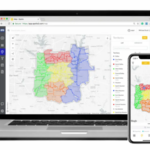Software development commonly employs regression testing as one of its testing methods. Regression testing gets its name from the fact that it involves “regressing” going back to the code that already exists to ensure that added functionality; features, or updates don’t have an adverse effect on it. Regression testing, in other words; makes sure that everything continues to work as it should even after an application has undergone changes. Due to the frequent updates that ERP applications receive, regression testing is particularly crucial. In this blog post, we will dive into the various types and benefits of regression testing.
Types of Regression Testing
Corrective Regression testing: When the product’s specifications don’t change; this type of regression testing is used. In addition, the expected test can be execute using the existing test cases.
Retest-all regression testing: Retest-all regression testing is an extremely difficult testing technique. It analyses every minuscule alteration made to the software since its inception. The most common scenario for retesting is when development teams believe recent code changes are to blame for the problem, despite previous regression tests failing to find it.
Selected regression testing: This is carrie out to ascertain how the code responds to the addition of new code to the existing code. This kind of regression testing makes use of a portion of the existing test cases to cut down on the time and cost associated with retesting.
Progressive regression Testing: When new test cases are develope for program modifications, this type of regression testing produces more illuminating results. Through this testing, you can ensure that there are no potentially vulnerable elements from the older version present in the most recent and revised version.
Partially Regression Testing: Software regression; testing of this kind is done to validate; issues that occur when new code is applie to older code. Partial regression testing ensures that a system functions as intended after new code is added.
Benefits of Automated Regression Testing
The following are a few of the main advantages that test automation offers in relation to regression testing:
- Regression testing that is automated gets rid of tedious, repetitive work. Every time you add new features, the regression test suites get larger. Running the entire regression suite in a short amount of time like the two weeks that Oracle has specified for its updates becomes difficult. Automation releases users from tedious, repetitive labor and enables teams to execute their entire suite of regression tests faster.
- Regression test automation increases the performance and stability of your application. With every update, ERP applications grow more complex, increasing the risk of human error in manual regression testing methods. Automation makes an application far more stable by lowering the chance of human error.
- Once created, automated regression tests can be reused indefinitely, obviating the need for repeated creation. Moreover, unlike human, manual testers, automated regression test cases can be run at any time of day.
In conclusion, one specialized tool for automation testing without coding is Opkey. By moving to Opkey, companies are able to achieve optimal test coverage and cut down on regression testing cycle times by 68%. With over 30,000 automated test cases for over 15 ERPs; the Opkey’s pre-built test accelerator repository facilitates efficient testing, improving the coverage of regression tests.




